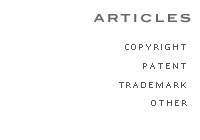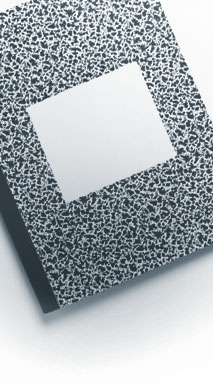

 |
||
 |
Patent Pending Interiors August 2000 Frank J. Martinez, Esq. One of the good things about being a designer is that people actually pay you to create. One of the bad things is that people (sometimes the very ones who said they would pay you) may be tempted to steal the fruits of your creativity. You can avoid such unpleasantness by taking steps to understand the basics of intellectual property law and seeking the proper form of protection for you work. Different design disciplines require different forms of protection” works of authorship, such as writing, original artwork, and graphic design, are normally protected by copyright. Works of architecture are also protected under copyright law. Copyright has its limits, however, and an important one is that it does not protect “useful,” or practical (as opposed to primarily ornamental) creations. The breadth of this category is staggering – consider the range of objects designed to meet particular utilitarian needs, from tables to typewriters. Mere usefulness makes them ineligible for copyright protection. But, as I noted in my previous column on intellectual property (April 2000), designers do have alternative means of claiming ownership when copyright protection is not available. They can seek a design patent. To be eligible for patent protection, a design must be new, original, and ornamental. New means that if the object you wish to patent has been disclosed to the public, such disclosure must have occurred no more than a year before filing. Original means that the work is new and nonobvious (rather than derived from or highly referential to a preexisting design; an inventor, for instance, would find it difficult to patent a clock face). Ornamental, as defined by the statute, requires that the object be an article of manufacture that embodies an impression, print, or picture. In practical terms, this means that an object’s design features must be distinct from its utilitarian ones. Over the years, the courts have determined that the overall shape and configuration of elements composing an object may themselves create a patentable design. Thus, design patents have been issued for such diverse items as stoves, computers, automobile instrument panels, eyeglass frames, athletic shoes, typefaces, lamps, faucets, furniture, doorknobs, sinks, motorcycles, rubber stamps, and medical instruments, just to name a few. In fact, a design patent can apply to almost any object of modern design. Unlike utility patents, which are granted for inventions that are technical in nature, the design patent has only one claim” the design of the object itself, which the inventor reveals or “discloses” through drawings submitted with the application. Designers willing to undertake a modest amount of research may file a design patent application themselves. It’s a fairly straightforward process, made easier by the Web site of the U.S. Patent and Trademark Office (www.uspto.gov) where anyone may research preexisting design patents and download information and forms. In addition, federal depository libraries (they’re located in most major cities; check www.uspto.gov for a complete list) have microfiche copies of almost every patent ever issued as well as research materials related to patents and trademarks. The most important information in any patent application is the disclosure of the invention. In a design patent, disclosure normally takes the form of black-and-white line drawings that offer a complete view of the object. Bear in mind that inventors were filing patents with pen-and-ink renderings long before they had ready access to cameras. Consequently, the patent office has developed an intricate set of rules over the years (also found at www.uspto.gov) that govern how edges, shading, color, texture, and material composition are to be represented. Adhering to them will help ensure a trouble-free process. Photographs are permissible, but they are also subject to strict guidelines regarding size and presentation. The single biggest error designers make when filing a design patent application is disclosing too much information in their drawings and thereby narrowing the scope of protection. If the design is disclosed in broad terms, with the least amount of detail sufficient to demonstrate that the work is original and nonobvious, others will have a harder time “designing around” the object (changing a few details to avoid infringing the patent). Designers should therefore resist the impulse to show absolutely every detail. The only time “less is more” doesn’t apply is when the particular field of invention is crowded. In such cases, extra detail will be necessary to distinguish a new design from existing ones. The filing fee for a design patent is $155 for an individual or small company (defined as a company with 500 or fewer employees). Once the application has passed through the examination process, an issue fee of $215 is required. The resulting patent is valid for 14 years from the date of issue. After that, the design falls into the public domain, and anyone is free to imitate it. Depending on your practice, filing for patents may be an important part of your business. If you design products, you should integrate patent protection into your regular operations. Although the rush of daily duties may seem more important than learning one’s way around the patent process, remember that, for independent designers, creations are assets. Good design lasts a long time; if you don’t protect it, you may find yourself giving it away.
Home Copyright Trademark Patent Litigation About Us ©2004 The Martinez Group PLLC |
 |